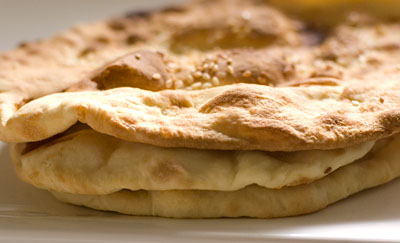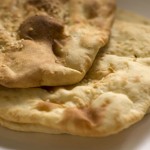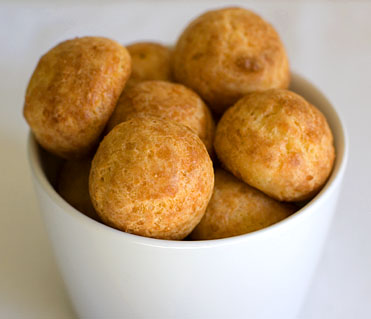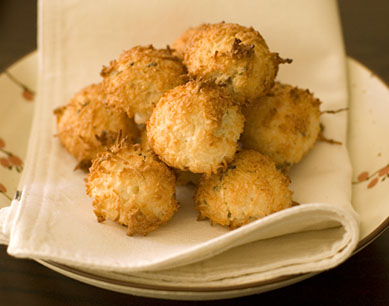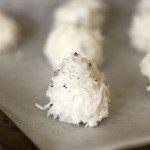Roti Mela : Naan
“Steingarten is perhaps one of only a handful of food critics who routinely takes a gun when he goes for a pizza. The gun is a non-contact thermometer and it tells him the heat of the oven: the crucial factor, he believes, in the success of the pizza base. As we leave the dumpling restaurant he has it cradled under his arm. And this gun, he explains, is not his only weapon in his fight for American taste. He also packs an instrument that allows him to measure the amount of sugar in a liquid. This has been his key strategic tool in a concerted two-year campaign to find the perfect peach.”
— Tim Adams on Jeffrey Steingarten, in Eating in America.
Well, I missed out on Srivalli’s Dosa Mela, but was very keen to participate in the Roti Mela, because I love all kinds of Indian flatbread. That said, I don’t usually make Naan at home because the result is never as authentic as the stuff that comes out of a tandoor oven.
I came across this recipe recently, after making a batch of chicken curry, and because the time and the ingredients were ready at hand, I decided to give it a go. The authors of the Cinnamon Club Cookbook have proudly endorsed their new way of making naan, and while it’s ingredients and method are by no means truly authentic, I’ve found the end result to be a nice big step in the right direction.
While making this recipe, I was also reminded of Jeffrey Steingarten’s attempt at making authentic pizza in his home. He did this by trying to rig his oven to reach higher temperatures than a normal domestic oven would. I didn’t exactly do this (because if my oven broke down due to mishandling, I couldn’t exactly ask American Vogue to replace it for me), but I did employ a few tricks I learned from reading Steingarten’s article on making pizza. The first thing to do was to turn the oven up to it’s maximum setting, and then also have the top grill on, so that it will give you the nice brown patches on your bread. I preheated a Matfer tray, which is a thick, heavy duty, black steel baking sheet that absorbs and retains heat very well. It gets hot enough such that the bread dough doesn’t stick to it while cooking, and pockets of air rise up almost immediately when the dough is placed on the tray to cook (which was fun to watch, I’ll have to say!). The dough cooked fairly quickly this way and there was no need to turn it.
A few other things to note, if you’re thinking of trying this recipe. I found the sugar to be irrelevant – in fact, it makes the bread a little less savoury than it should be, so either reduce it, or omit it altogether. Before baking the bread, I sprinkled some sesame seeds which I thought were a nice addition, and once the bread comes out of the oven, you can also brush a bit of butter over the top. Next time I make this, I’m also going to try replacing some of the egg with plain yogurt.
Naan Bread :
(makes 16; from The Cinnamon Club Cookbook by Iqbal Wahhab and Vivek Singh)
750g plain flour
1 1/2 teaspoons baking powder
1 tablespoon salt
400ml whole milk
2 eggs
3 tablespoons caster sugar
3 tablespoons vegetable oil
Mix the flour, baking powder and salt together in a bowl. Whisk together the milk, eggs and sugar, then add this mixture to the flour and knead lightly to make a soft dough (take care not to overwork the dough or it will become too stretchy). Cover with a damp cloth and leave to rest for 15 minutes.
Pour the oil over the dough and turn it a few times so it is evenly coated. Divide the dough into 16 pieces, roll out each one into a circle about 9cm in diameter, then gently stretch out one side to form the traditional teardrop shape.
Preheat the oven to 220’C, placing a baking tray in it to heat up. Place the naan breads on the hot tray and bake for 4-5 minutes, until they are starting to brown in patches. You might need to turn the bread to colour both sides.

